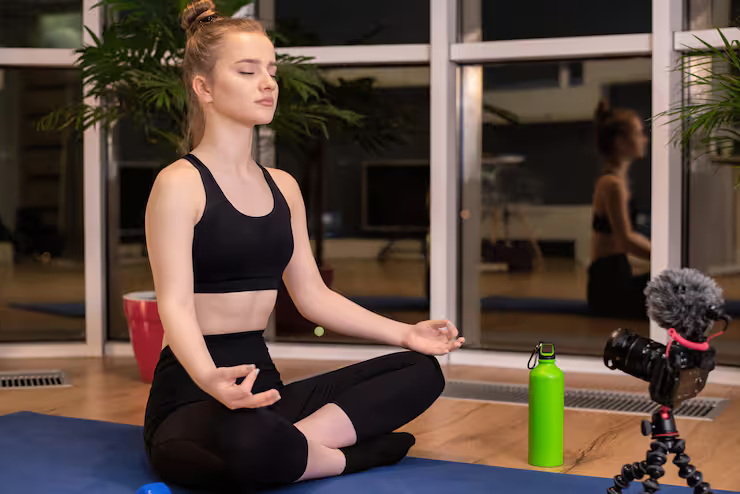They exist to bridge the gap between traditional in-person training and the growing demand for certified online instructors, allowing individuals to train from home, build credentials, and start careers in health and wellness.

Importance – Why these programs matter today
Choosing the right online fitness or yoga program is important for several reasons:
-
Professional credibility: Certification ensures recognition from gyms, studios, and wellness organizations.
-
Skill development: Programs offer comprehensive knowledge of exercise techniques, anatomy, nutrition, and wellness coaching.
-
Flexibility: Online courses allow learners to study at their own pace, balancing work, personal life, and training.
-
Global reach: Students can access instructors and courses from around the world without geographical limitations.
-
Career opportunities: Completing certified programs opens doors to personal training, online classes, and corporate wellness coaching.
These programs benefit anyone seeking a career in health, fitness, or wellness education, from beginners to experienced professionals.
Recent Updates – Trends in online fitness and yoga education
Recent trends over the past year (2024–2025) highlight the evolving landscape:
-
Hybrid programs: Many programs now offer a mix of live virtual classes and self-paced learning modules.
-
Specializations: New courses focus on prenatal yoga, senior fitness, functional training, and mindfulness-based exercise.
-
Technology integration: Platforms now include AI-based movement analysis, online assessment tools, and virtual anatomy labs.
-
Global certifications: Institutions are increasingly providing certifications that are recognized internationally for online teaching and personal training.
-
Affordable micro-credentials: Short-term certificate programs help learners quickly gain skills without committing to long-term courses.
These updates reflect the demand for accessible, flexible, and specialized fitness education.
Laws or Policies – Regulations affecting online programs
Understanding legal and regulatory considerations ensures the certification is recognized and valid:
-
Accreditation standards: Online programs should comply with national or international fitness education standards.
-
Health and safety regulations: Courses must teach safe exercise practices and liability awareness.
-
Continuing education requirements: Some regions require periodic recertification for personal trainers and yoga teachers.
-
Insurance requirements: Certified trainers may need professional liability insurance to teach clients online or in-person.
-
Data privacy laws: Online learning platforms must comply with privacy regulations for student data, especially for international students.
Compliance ensures students gain legally recognized credentials and the ability to practice safely.
Tools and Resources – Finding and managing online programs
Learning Platforms & Apps
-
Udemy and Coursera: Offer a wide range of fitness and yoga certification courses.
-
Yoga Alliance: Provides internationally recognized yoga teacher certification programs.
-
NASM and ACE: Platforms offering personal training and specialized fitness courses.
Planning and Tracking Tools
-
Trello or Asana: Manage study schedules, deadlines, and assignments.
-
MyFitnessPal or Fitbod: Practical apps for applying training knowledge and tracking workouts.
-
Google Sheets or Excel: Track certification progress, practice hours, and assessments.
Supplementary Resources
-
Anatomy apps: Visualize body movements and learn muscle groups.
-
Online community forums: Network with other fitness and yoga students or instructors.
-
Video platforms: YouTube and Vimeo for demonstrations and teaching techniques.
Table – Comparison of Popular Online Fitness Programs
| Program Name | Duration | Certification Type | Cost Range ($) | Notable Features |
|---|---|---|---|---|
| Yoga Alliance Online | 200–500 hours | International Yoga Cert | 500–1,200 | Live sessions, mentor support |
| NASM Certified Personal Trainer | 8–12 weeks | CPT Certification | 700–1,500 | Anatomy labs, virtual exams |
| ACE Fitness Online Courses | 6–10 weeks | Personal Trainer Cert | 400–1,000 | Self-paced, practice exams |
| Coursera Health & Wellness | 4–12 weeks | Digital Certificate | 50–300 | University-backed content |
| Udemy Yoga Teacher Training | 4–6 weeks | Online Certificate | 100–400 | Affordable, on-demand modules |
FAQs – Frequently asked questions about online fitness and yoga programs
Q1: Can I become a certified yoga or fitness instructor entirely online?
Yes, many programs provide full certification online, including virtual practical assessments and exams. Some require a minimum in-person component for specific certifications.
Q2: How long does it take to complete an online certification?
It varies from 4 weeks for short-term courses to 6–12 months for advanced or comprehensive programs, depending on course intensity and pace.
Q3: Are online certifications recognized by gyms and studios?
Yes, if the program is accredited by recognized bodies such as Yoga Alliance, NASM, or ACE, employers typically accept them.
Q4: Do I need prior experience to enroll?
Some programs are beginner-friendly, while advanced programs require prior fitness knowledge or foundational yoga experience.
Q5: How much does an online program cost?
Costs range widely from $50 for micro-certificates to $1,500 for full professional certifications. Additional fees may apply for exams or study materials.
Final thoughts
Online physical training and yoga teacher programs offer a flexible, accessible, and professional pathway for anyone seeking a career in health and wellness.
By understanding trends, certifications, regulations, and resources, aspiring instructors can choose programs that align with career goals, budget, and schedule.
With the right tools, dedication, and certified programs, learners can confidently train clients, teach classes, and build a rewarding career in the growing global fitness and wellness industry.





